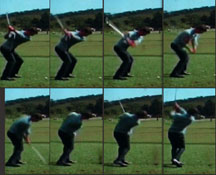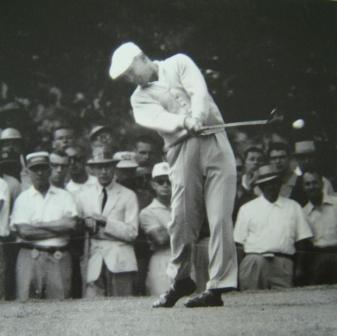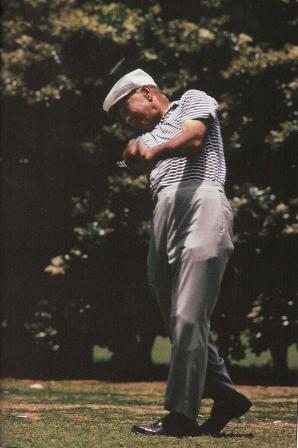Lag,
I would say my hands are passive, I consciously do nothing with them they just hold the golf club and go as George said where ever they want to, I don’t give a passing thought to them once I have gripped the club, I do however feel sort of a loading in my left wrist during transition when I am swinging it really good, I think this is something that is referred to as float loading although I am not clued up on TGM methods or phrases.
I feel the weight start moving just prior to impact almost bang on impact, through and beyond from right foot to left foot
I have seen you mention that you have some footage of Moe that he allowed you to film, I understand you not wanting to share this especially if Moe said it was for your study only, it would be disrespectful to release it, as much as I want to see it, I respect your decision!
I have a question about this footage though, was his swing more like power golf when you filmed it? As apposed to the footage that we regularly see? Think what im getting at is more up then in as apposed to in then up, hope you get what i meen. Some recent footage I have seen made me think about this. I can do a video of this if anyone wants to see it let me know although the quality is not great!, I still believe Moe was using centrifugal force back then as apposed to some con men who say Moe didn’t use CF!
Also what grip was he using back then? Overlapping or ten fingered? would you say it was neutral? but with left thumb riding more down the rhs of shaft?
I heard Mike Maves once mention that Moe carried pictures of Hogan around in his wallet, I did ask him about this but unfortunately he never answered my question, I have always presumed these would have been from power golf as there are many sketches in there of different positions in the swing, this new footage backs my theory up, couple that with the fact that Moe said he was 19 when he truly understood the golf swing the same year power golf was published! Coincidence?
some of the pictures i think Moe might have used are on pages 71, 131!





